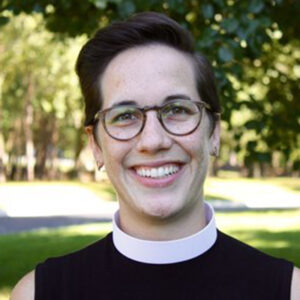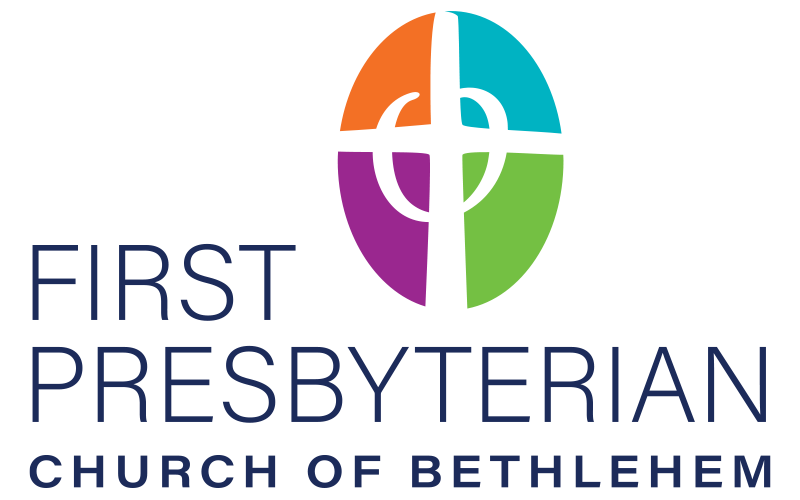Wake Forest religion professor Dr. Mary Foskett sets the scene for our text: “In today’s reading, the writer of the letter to the Hebrews addresses a community needing to hear that it belongs. Seemingly having grown weary of the Christian life and perhaps worn by external pressure put upon the community, some were struggling with their faith and others were even neglecting to meet together (Hebrews 10:25). After previously enduring hardship and having shown great love for one another (6:10), the community had become, over time, less confident, less enthusiastic, and less cohesive (10:35).”
They, too, are a community in transition.
Though this book of the Bible is called “The Letter  to the Hebrews,” its structure and style along with the author’s claim to present a “word of exhortation” really make it more like a sermon. We find ourselves in the 11th of 13 chapters—the preacher is working toward a conclusion—when we’re reminded just what faith is as the 11th chapter begins: “Now faith is the assurance of things hoped for, the conviction of things not seen.”
to the Hebrews,” its structure and style along with the author’s claim to present a “word of exhortation” really make it more like a sermon. We find ourselves in the 11th of 13 chapters—the preacher is working toward a conclusion—when we’re reminded just what faith is as the 11th chapter begins: “Now faith is the assurance of things hoped for, the conviction of things not seen.”
As we well know, the assurance of things hoped for, the conviction of a future not yet known or seen, can be an anxiety-producing, in-between space to sit in. It’s uncomfortable. Difficult. And even painful when the past felt so sure and secure. We either want to go back to the familiar way things used to be or to hurry up and get to whatever comes next, thank you very much.
But along with the Hebrews, we’re called to live in this in-between season with faith…the assurance of things hoped for, the conviction of things not seen. Thankfully, neither they nor we have to do so without spiritual support, which is what we get from today’s text. This passage recalls “the stories of those who had gone before, living out their faith in God’s promises, and laying the path of endurance for others to follow” (Mary Foskett). These are stories of faith; oral snapshots in the communities’ photo album of the ancestors who taught them what faithful living looks like. Here, we get reminder after reminder of how it was “by faith” that Abel, Enoch, Noah, Abraham, Sarah, Isaac, Jacob, Joseph, Moses’s parents, and Moses endured. By faith, by faith, by faith.
As one scholar notes, “The list of names, clearly intended to inspire and encourage the letter’s readers, surely would have caused them to recall the stories of these biblical figures in all their complexity. It is because of their faith alone that the writer sees each of them, these flawed and messy human beings, as righteous (10:38).” No need to be perfect; just faithful.
“The writer of Hebrews…helps us look at snapshots in the gallery of faith: Remember those who crossed over the Red Sea. Remember Rahab, who welcomed the scouts. Remember those who marched around Jericho. Remember Sampson and Daniel, who shut the mouths of lions. Remember those who won strength out of weakness like Gideon and Esther. Remember those who were tortured, mocked, scourged, and tormented.” (Bryan Whitfield).
There are two things I can’t help but notice here: first of all…in true Jesus fashion… “Rahab the prostitute”—a Canaanite woman who showed radical hospitality to Israelite spies in their time of need—makes the list. And we are reminded yet again that those society deems to be “outsiders” embody the pattern of Christ. We don’t get to say who’s faithful and who isn’t, who’s appropriate and who isn’t, who’s fit to serve and who isn’t, who’s in and who’s isn’t. Rahab’s inclusion in this ancient list of those among our faithful ancestors reminds us that God calls and uses whoever God pleases regardless of our acceptance or comfort.
The second thing I see here is that there are two portraits of faith, and they aren’t mutually exclusive. One set of images shows triumph: conquering enemies, obtaining promises, shutting the mouths of lions, even gaining victory over death. But the other set of images is filled suffering: public mocking, imprisonment, beating, stoning, homelessness, violence, and death.
Faith is a gift, a promise of what isn’t yet. But faith is also a commitment, one that comes at a cost. I think we rather like to forget or ignore that part of what it means to be a follower of Jesus. Dr. Foskett reminds us that “What the passage does not do is question why hardship is part of the Christian life. It draws on Jesus’ own example and simply assumes that such is the case. Life is difficult and the Christian life is no exception. In fact, discipleship will likely entail new challenges and unanticipated costs. The key for the author of the letter to the Hebrews is that faith discerns where real life is to be found, knows which values are true and which are counterfeit, and endures hardship in the face of divine promise.”
So we learn that faith endures. Faith trusts God’s promises even when the present calls those promises into question. In the face of difficulty and discomfort, faith holds on and holds out because of the certainty of a future in which God has something better in store. It is a creative, strong, lasting endurance of the saints gone on before us. Such are the lessons from our photo album of faith. We remember our companions in the great cloud of witnesses. We are not alone.
I wonder whose names you might recall in your life and in the life of this community. Who is it that reminds you what faith in action looks like? Whose presence in the great cloud of witnesses are you most grateful for? What characteristics of faithful living did you most admire in them?
As we remember the saints who are our companions, we also remember our purpose. As one preacher puts it, “We have a race to run. We are not mere tourists in this world, wandering from place to place, taking pictures, visiting landmarks, writing postcards, and then cheerily returning to the safety of home. We are runners in a race—not a fifty-yard dash, but a marathon” (Bryan Whitfield).
A marathon, huh? Yikes… I don’t know about you, but…I’m not a runner. I used to be. I ran a half marathon once over a decade ago. I felt very accomplished running 13.1 miles, and I was very clear that I never felt the need to run any farther than that. But my father-in-law, Steve, is a marathon runner. More than a 15 years ago now, when he was 48, Steve decided he wanted to run a marathon by the time he was 50. So he started training.
Because he is a meticulous researcher (rather like his daughter), there was not a Runner’s World article that he hadn’t read or training plan he hadn’t considered. Race day came, and he set off on his 26.2 mile excursion. And in that very first race, his time qualified him to run the Boston Marathon. So he did. In fact, he has run Boston three times now, including in 2019, where his average pace was just over 8 minutes per mile. (I can’t run one mile that fast, much less 26.2 of them!)
But perhaps his most memorable Boston experience was in 2014, the year following the 2013 marathon bombings which killed three people and injured several hundred others, including 16 who lost limbs. In the face of their pain and suffering, the city responded with “Boston Strong,” refusing to let fear dictate the future of the race. That year, 36,000 runners…about 6,000 more than average…ran the Boston Marathon. And roughly a million spectators and cheerleaders lined the race course…more than twice the number who attend during a typical year. Steve said the energy was just absolutely electric for the whole 26.2 miles.
This is the image that comes to mind for me as I read this text. Indeed, we are called to run with perseverance the race set before us…even through transition and trial, through hell or high water, through change and challenge. And as we do so, we are surrounded and cheered on by a whole host of saints gone on before us to keep running with faith and perseverance. The marathon we run is one whose course charts out a new creation, one whose path responds to the needs that surround us. It is a lifelong endurance race to live with such faithfulness that nations are transformed, that the poor and oppressed are liberated.
Friends, have faith. Run with perseverance. And remember. Because though our race isn’t the same as theirs, the cloud of witnesses who encourages us also jogs our memory about the ways in which faith, while offering many gifts, also comes at a cost. Faith brings us comfort, but faith also brings us to the edge of our comfort zone. And then promptly pushes us outside of it. There is no getting around the race being difficult and leaving us sore, yet we run anyway. We persist anyway. We move on anyway. We change anyway. For God’s future is the race. So lace up your shoes, friends. And let’s run. With deep faith. And with great perseverance. This day and each day. Amen.
